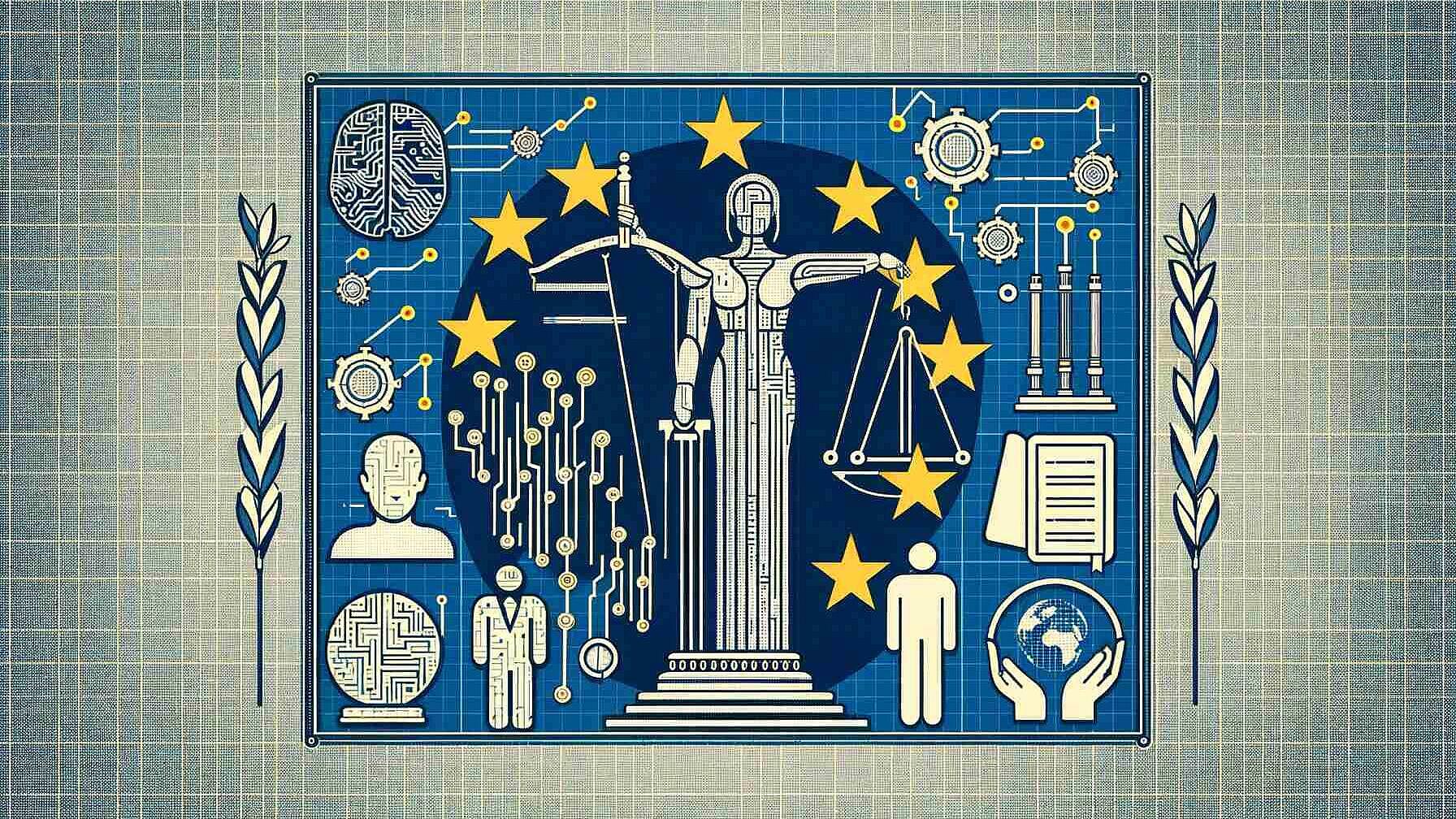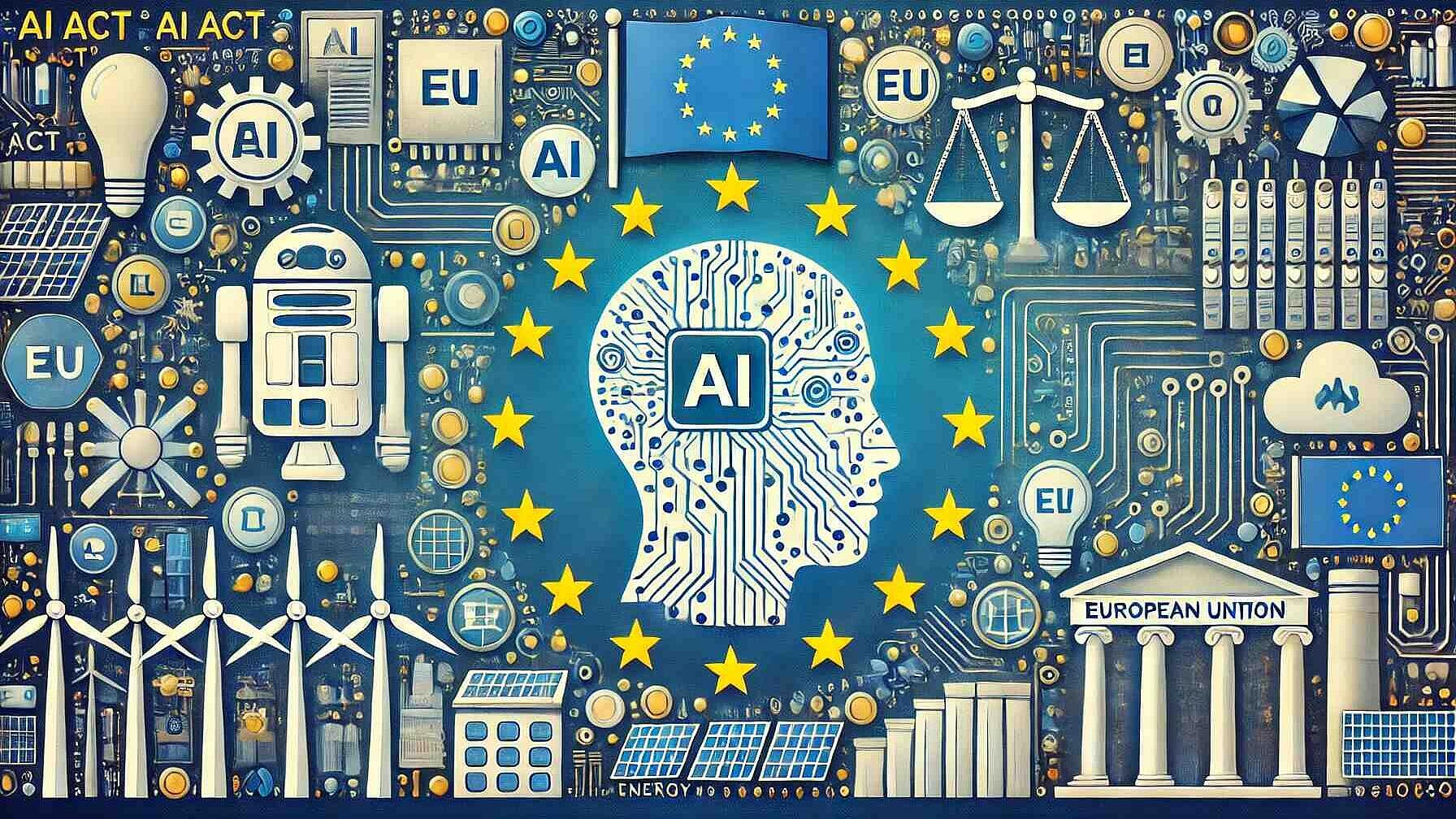 Digitalisation
DigitalisationArtificial Intelligence Act: Landmark Deal Reached for World's First AI Rules
Summary
The landmark Artificial Intelligence (AI) Act agreement reached between the Council presidency and the European Parliament sets a precedent for integrating AI into the European market while protecting fundamental rights and fostering innovation. The AI Act outlines a risk-based regulatory framework, particularly imposing stringent rules on high-risk AI systems. The agreement's revised governance structure allows for EU-level enforcement and dictates a fundamental rights impact assessment for high-risk AI deployments.
AI systems have been categorically defined, excluding uses in national security, military purposes, and other non-professional applications, following the OECD approach. High-risk systems now face strict EU market access requirements, with specific prohibitions on practices like manipulative or predictive policing techniques. Nevertheless, law enforcement can employ remote biometric identification with appropriate safeguards.
Newly introduced are provisions for general-purpose AI systems, focusing on transparency and systemic risk management. A centralized AI Office will manage these systems, with the AI Board and an advisory forum supporting execution and providing expertise. Penalties for non-compliance are based on global annual turnover, adjusted appropriately for SMEs and startups.
The agreement also aims to stimulate innovation by modifying support measures and establishing AI regulatory sandboxes. The AI Act is set to be enforced two years post-enactment, with certain provisions subject to specific timelines. This proposal, initiated in April 2021, is part of the EU's effort to harmonize AI development with fundamental rights considerations, mirroring the General Data Protection Regulation's influence on data protection.
Open full article
Artificial Intelligence Act: Landmark Deal Reached for World's First AI Rules
Introduction
After intensive three-day negotiations, a historic agreement on the Artificial Intelligence Act has been reached between the Council presidency and the European Parliament. This act, a pioneering legislative initiative, aims to safely integrate AI into the European market while safeguarding fundamental rights and promoting innovation in Europe.
Carme Artigas' Statement
Carme Artigas, the Spanish Secretary of State for Digitalisation and AI, emphasized the significance of this agreement. It strikes a balance between fostering AI innovation across Europe and protecting citizens' fundamental rights.
The AI Act's Vision
The AI Act is designed to guide the development and use of AI in the EU's single market. It employs a risk-based approach, setting stricter rules for AI systems that pose greater risks. This act is poised to become a global benchmark for AI regulation, much like the GDPR has been for data protection.
Provisional Agreement Highlights
- New Rules and Governance:
- The agreement introduces rules for high-impact AI models and high-risk AI systems.
- A revised governance system includes enforcement powers at the EU level.
- The list of prohibitions is extended but allows law enforcement to use remote biometric identification in public spaces under certain safeguards.
- Deployers of high-risk AI systems must conduct a fundamental rights impact assessment before use.
- Definitions and Scope
- The definition of an AI system is aligned with the OECD approach, providing clear criteria.
- The AI Act does not cover national security, military purposes, research, innovation, or non-professional AI use.
- Classification of AI Systems:
- A horizontal protection layer includes classifying AI systems as high-risk.
- High-risk AI systems are subject to requirements for EU market access, with considerations for data quality and technical documentation, especially for SMEs.
- Prohibited AI Practices:
- Certain AI uses are deemed too risky and are banned, like cognitive behavioral manipulation, emotion recognition in workplaces, and predictive policing.
- Law Enforcement Exceptions:
- Specific allowances are made for law enforcement, balancing operational confidentiality with fundamental rights protection.
- General Purpose AI Systems and Foundation Models:
- New provisions address general-purpose AI systems and foundation models, focusing on transparency and systemic risk management.
- Governance Architecture:
- An AI Office within the Commission will oversee advanced AI models.
- The AI Board, comprising member states' representatives, will coordinate implementation and advise on foundation models.
- An advisory forum will include various stakeholders for technical expertise.
- Penalties:
- Fines are set as a percentage of global annual turnover or a predetermined amount, with proportionate caps for SMEs and startups.
- Transparency and Fundamental Rights:
- A fundamental rights impact assessment is mandated before deploying high-risk AI systems.
- Increased transparency is required for the use of high-risk AI systems.
- Innovation Support:
- The agreement modifies support measures for innovation, including AI regulatory sandboxes for testing in real-world conditions.
- Entry into Force and Next Steps:
- The AI Act will apply two years after its enactment, with some provisions having specific timelines.
- The compromise text will undergo finalization and legal-linguistic revision before formal adoption.
Background:
Launched in April 2021, the Commission proposal is part of the EU's policy to foster safe and lawful AI development that respects fundamental rights. Following a risk-based approach, it aims to create a uniform legal framework for AI, enhancing governance, enforcement, and facilitating a single market for AI applications. Negotiations with the European Parliament started in mid-June 2023 following the Council's agreement on this file in December 2022.
Further reading
- Artificial intelligence act, Council’s General Approach, 6 December 2022
- Artificial intelligence act, Commission proposal, 14 April 2021
- A European approach to artificial intelligence (European Commission information)
- A digital future for Europe (background information)
- Your life online: how the EU is making it easier and safer for you (feature story)
- Artificial intelligence (background information)



